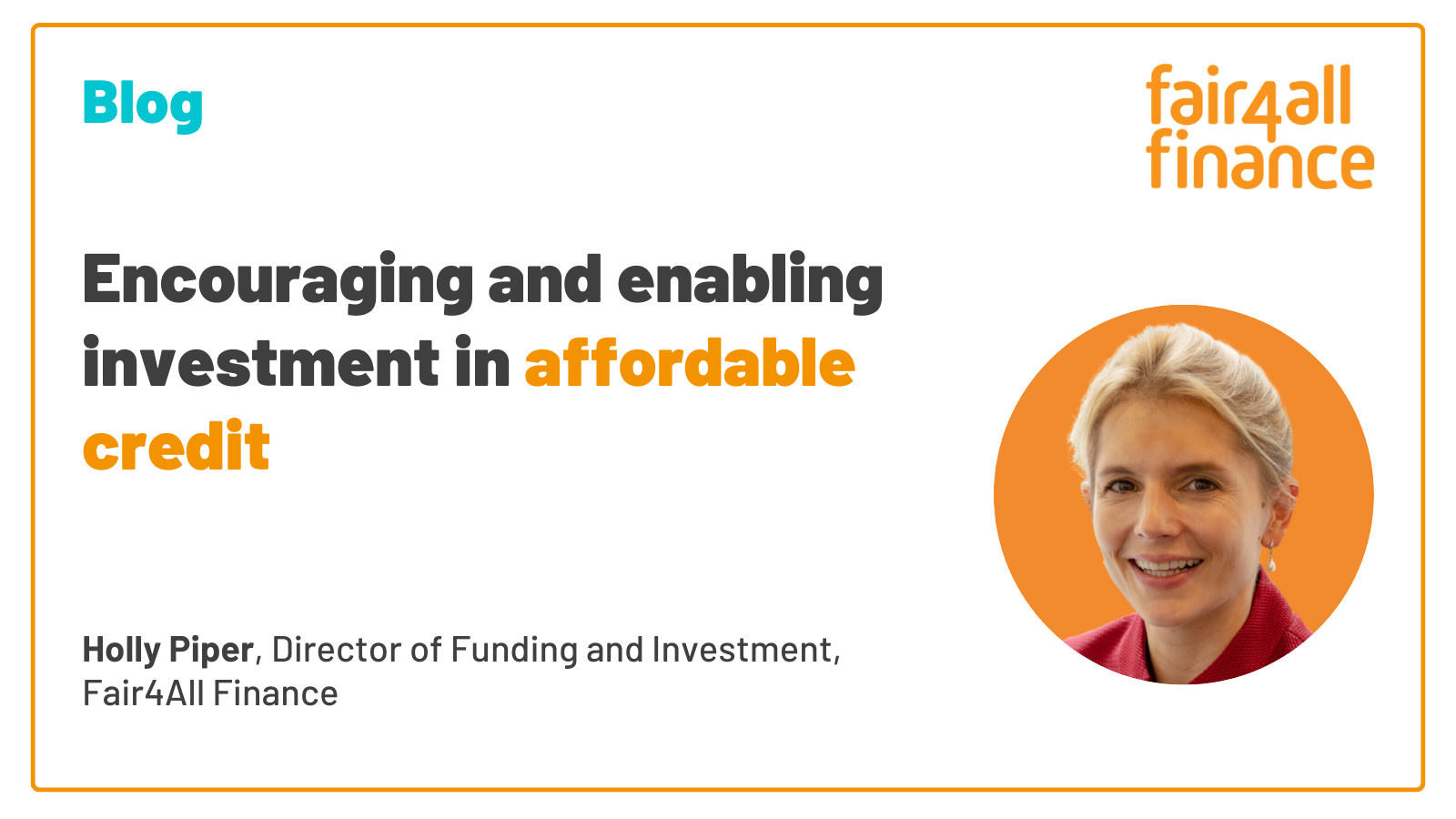Blog: Encouraging and enabling investment in affordable credit
How do we encourage and enable investment in affordable credit? One of our key priorities at Fair4All Finance is increasing access to affordable credit, and we’re doing this through our affordable credit scale up programme, and more recently our Community Finance Resilience Fund.
However a key aspect of this work is encouraging further investment – and we are working closely with banks, social investors and other funders to do this. At our first financial inclusion conference this summer, I was pleased to join a panel of brilliant thoughtful investors to debate how we encourage and enable investment in affordable credit.
Here are some of the key takeaways from our discussion:
Huge commercial and impact opportunity
There is a clear need to scale affordable credit in the UK. LEK Consulting has estimated the (serviceable) market gap in affordable credit to be £2bn. Addressing this will have huge social impact for millions of people in vulnerable financial circumstances. And is a growth opportunity for impact-focused capital
The cost of small sum lending
We heard that social lenders ‘lend well’. So, it’s important that those who invest into affordable credit look to separate out lending risk from operational risk as lending risk is not the key concern.
Small sum lending makes a big difference to people in financially vulnerable circumstances, however the issue we encounter time and time again is that one of the drivers of operational risk for lenders is that the income raised by these small sum loans (£1000 and under) is often lower than the costs of servicing the lending. Simply put, small sum lending doesn’t make money.
Therefore, to make short-term, small sum loans available to some customer groups there may need to be a modest subsidy to support people in financially vulnerable circumstances.
Investing for social impact
There is a real opportunity for impact-focussed funders to support here, particularly when looking at the additional costs incurred from providing important support services to improve borrowers’ financial resilience, such as benefit calculators, personal referral services etc. This can and absolutely should be separate from investment raised for lending capital.
One investor talked about the huge philanthropic support given to microfinance overseas, and ended on a call to action to see more foundations and philanthropists supporting social lenders with this closer to home.
Reducing the cost of credit
It’s essential that we continue working together to reduce the cost of credit, building on the detailed work last year with Responsible Finance and Moneyline, to better understand the unit economics of small sum lending, collaborating across credit unions, CDFIs and social fintechs to improve operational efficiency, get the best value from external costs, and compete for the lowest cost of capital.
What about APR?
High APRs (the way of showing the price of credit for customers) are still seen as a barrier by many potential investors. However APR isn’t a good metric to understand the cost of credit for shorter term loans. There’s a few reasons for this, and Michael Sheen explains this far better than I can!
What next?
At Fair4All Finance, we will continue to work with a huge range of investors to ensure social lenders have the right investment and funding to scale their lending to meet demand:
- Learning from others, sharing best practice and making connections between funders
- Guaranteeing new investors to the sector and working to expand existing guarantee schemes (a game-changer)
- Match-funding pioneering retail fundraises
- Providing first-loss and equity capital to leverage social and commercial investment
